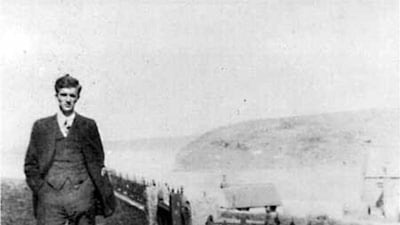The literature of disappointment is often reckoned to be an enervating art. Dwell on your misfortune, speak of your thwartedness, sing of your misery, and you are likely to cast your reader into the apparent despondency that was your moment of inspiration. Or so such views go. Yet to think this way is to miss the point about misery. The pain of the unfulfilled ambition, of the love unreturned and of the fugitive beauty, comes not from an absence of rapture, but a surfeit of it. Robert Burton wrote The Anatomy of Melancholy (1621) suffused with a sense of plangent sweetness. Samuel Beckett stirs our hearts not because of an indifference to the wonders of life, but because of an acutely sensitive apprehension of the certainty of their departure. Philip Larkin wrote his heart-contracting poems out of despair at the realisation that the contractions, and the heart, would one day cease. What would survive of him was dust. Or so Larkin feared.
But the example of each of these writers ought to remind us that the paean to gloom, when composed by those of a genuinely artistic sensibility, sounds not only with chords of sorrow and loss, but with the enlarging cadences of the glories of the world noticed, cherished and preserved. There is a good reason you do not feel wretched at the end of King Lear.
And there is an equally good reason you do not feel wretched at the end of W N P Barbellion's extraordinary diary, The Journal of a Disappointed Man (1919). For although this gorgeous and neglected chronicle, recently reissued by Penguin Classics, ostensibly documents the brief life and deep woes of a young man as he gradually succumbs to the relentless progression of multiple sclerosis, the overwhelming energy of the book is one of inversely registered gratitude, enthusiasm and wonder.
Who was he? Barbellion was Bruce Frederick Cummings (1889-1919). His nom de plume arose from an obeisance to three of the most benighted figures in history (Wilhelm, Nero, Pilate) and the name of his favourite London bakery. He was a passionate, precocious naturalist. And at the age of 13, he set about documenting the lineaments of his everyday life.
This might not sound like a riveting project, but Barbellion’s words arrive with a passion that lend truth to the proposition that the really significant writing about grief comes with its own special variety of inspiration. Unlike those – too numerous to mention here – who end up writing about sadness with directionless inanition, Barbellion goes at his subject with weirdly compelling brio. Many of his most arresting diary entries are short and almost comically laconic. Of a new kitten: “It is grey.” Of his countryside pursuits: “I have bought a book on practical trapping.” Of further pursuits: “Dissected the Sheldrake.”
In his longer entries, we are granted acquaintance with a sensibility, afforded the opportunity to meet a literary talent that ought to feature prominently in accounts of our cultural past. To read these mortal reckonings – Barbellion's illness carried him away in his late 20s – is to encounter a nature that is determined, frightened, robust and alert. When you are not reading a diurnal record of beautifully Beckettian brevity – "September 8. Wet all day. Toothache. September 9. Toothache. September 10. Toothache. September 11. Toothache," – you find yourself in the presence of exquisite recognition on the richness of the natural world and the variegated forms of human suffering.
When Barbellion sees wild ducks in winter, he sees creatures resting “serenely on the water like floating corks on a sheet of glass”. An endearingly over-enthusiastic teacher is envisaged “washing his hands with invisible soap”. But among the most arresting of Barbellion’s observations are his thoughts about the death that, in his third decade on Earth, he knew was already intrigued by him. “To me”, he writes, “the honour is sufficient of belonging to the universe – such a great universe, and so grand a scheme of things. Not even death can rob me of that honour. For nothing can alter the fact that I have lived; I have been I, if for ever so short a time. And when I am dead, the matter which composes my body is indestructible – and eternal, so that come what may to my ‘soul’, my dust will always be going on, each separate atom of me playing its separate part – I shall still have some sort of a finger in the pie. When I am dead, you can boil me, burn me, drown me, scatter me — but you cannot destroy me: my little atoms would merely deride such heavy vengeance. Death can do no more than kill you.”
There are moments of unpleasantness and infelicity. In common with most men of his age, Barbellion is susceptible to moments of misogyny, sexism and brutality. Women are cast as citadels to be stormed: “Last evening, after much mellifluous cajollery, induced her to kiss me”; bandy legs are bad in general, but never so dispiriting as when they are attached to the torso of a woman. An adder’s head is stamped on.
But these are youthful follies, and they ought not deter the reader toying with the idea of buying this book. The Journal of a Disappointed Man is a singular, unjustly forgotten achievement. Brave, concentrated, unique, full of steady wisdom and attentiveness, it is the record of a life appreciated and endured. Death, it reminds us, waits for all. Reaching it will not be easy. The world will keep turning when we're gone. But in the meantime we have the honour – sufficient if not ideal – of belonging to, and of making, the universe.
____________________
Read more:
‘My House of Sky’ explores the elusive life and work of author J A Baker
Book review: in 'Heather, the Totality Evil' stalks an ingenue, to crush a ‘perfect’ world
Amanda Coe on how her writing challenges the notion of female characters as victims
____________________

